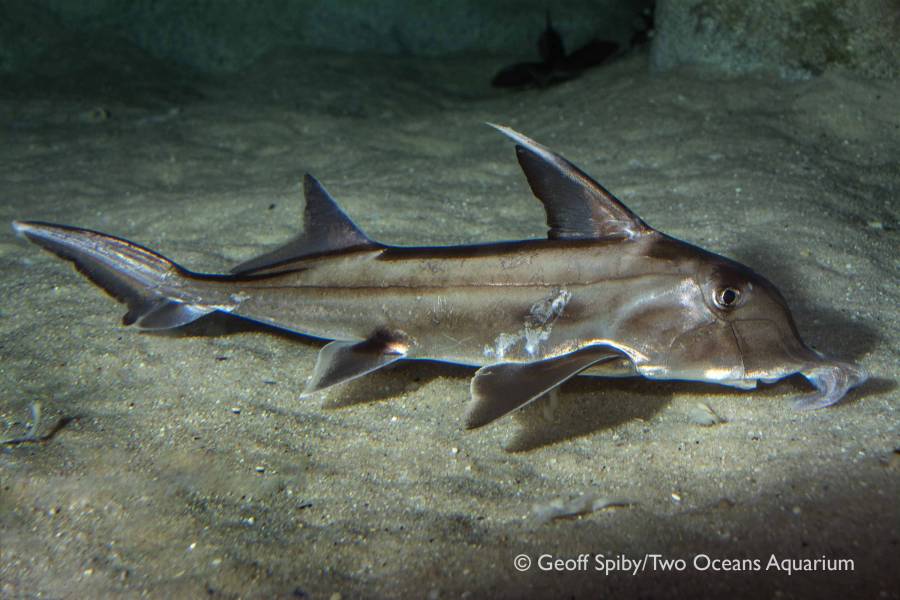The St Joseph shark is an unusual-looking fish. It is small, silver and has no scales along with a trunk-like snout. Their bodies are soft, their heads are large and they have a single gill opening on each side.
“Their unusually long snout is an advanced sensory organ that St Joseph sharks use to detect prey. They also have a venomous spine protruding from their dorsal fin that is used for self-defence,” said the Two Oceans Aquarium.
“The reason they are so weird is that they branched off from other members of the Chondrichthyes (cartilaginous fishes) family about 400 million years ago. Elasmobranchii (the subclass that contains sharks and rays) evolved the distinct characteristics we associate with cartilaginous fishes, but the Holocephali class took a different evolutionary path.”
They are a member of the subclass Holocephali, commonly known as chimaeras – the only member of this group commonly found in South African waters.
“In Greek mythology, a chimaera was a beast composed of the parts of different animals, many of which you may have heard of – minotaurs, gryphons and Cerberus. Unlike these mythical creatures, the St Joseph shark is as close to a real-life chimaera as we can get – a combination of traits commonly associated with sharks and those associated with bony, ray-finned fish. You can think of a St Joseph shark as being halfway between a typical fish and a typical shark,” it said.
Here are some of the key differences:
- Elasmobranchs have multiple gill openings, but Holocephali like St Joseph sharks only have one on each side – a trait they share with bony fish.
- In addition to having only one set of gills, these are covered by operculums, structures only seen in bony fish.
- Their upper jaw is fused with their skull, whereas the upper jaw moves freely in true sharks.
- Like other sharks, St Joseph sharks have external claspers that are used for reproduction. However, they also have three tentacle-like structures, two that can be extended from the pelvis and the other from their heads, to help clasp the female.
- Unlike sharks, their teeth are not replaceable and they only have three pairs of large grinding teeth that must last their entire lives.
- They have separate genital and anal openings.
“Other members of Holocephali are just as weird at the St Joseph shark – falling into the genera of ratfishes, rabbitfishes and elephantfishes,” the Aquarium said.
St Joseph sharks can be found in shallow coastal waters, predominantly along the southern and western parts of the Cape, but their range also extends to Namibia and the Eastern Cape. Most chimaeras are deep-water species, so the St Joseph shark’s habitat is rather unique.
“They reach sexual maturity at the age of three or four years when they are just over half a metre long,” the Aquarium said. “Compared to other cartilaginous fishes, they reach maturity rather early and are highly fecund – another feature they share with bony fish. Their hairy brown spindle-shaped eggs are laid directly on the seabed and it is not uncommon for many of them to wash up during the peak summer egg-laying season. These eggs take approximately nine to 12 months to hatch.”
During the breeding season, females move closer to the shore to lay their eggs, and juveniles will remain in these shallow waters for the first few years of their lives. These nursery areas are prime targets for overfishing, and a major reason why this species has been classified as Red on the WWF SASS List.
“Approximately 700 to 900 tons of St Joseph sharks are caught each year using gillnets, with this fishery being centred around St Helena Bay. This fishery is highly regulated in the area, but many St Joseph sharks are caught as bycatch from other fishing methods, such as trawlers.”
Picture: Supplied/Two Oceans Aquarium

